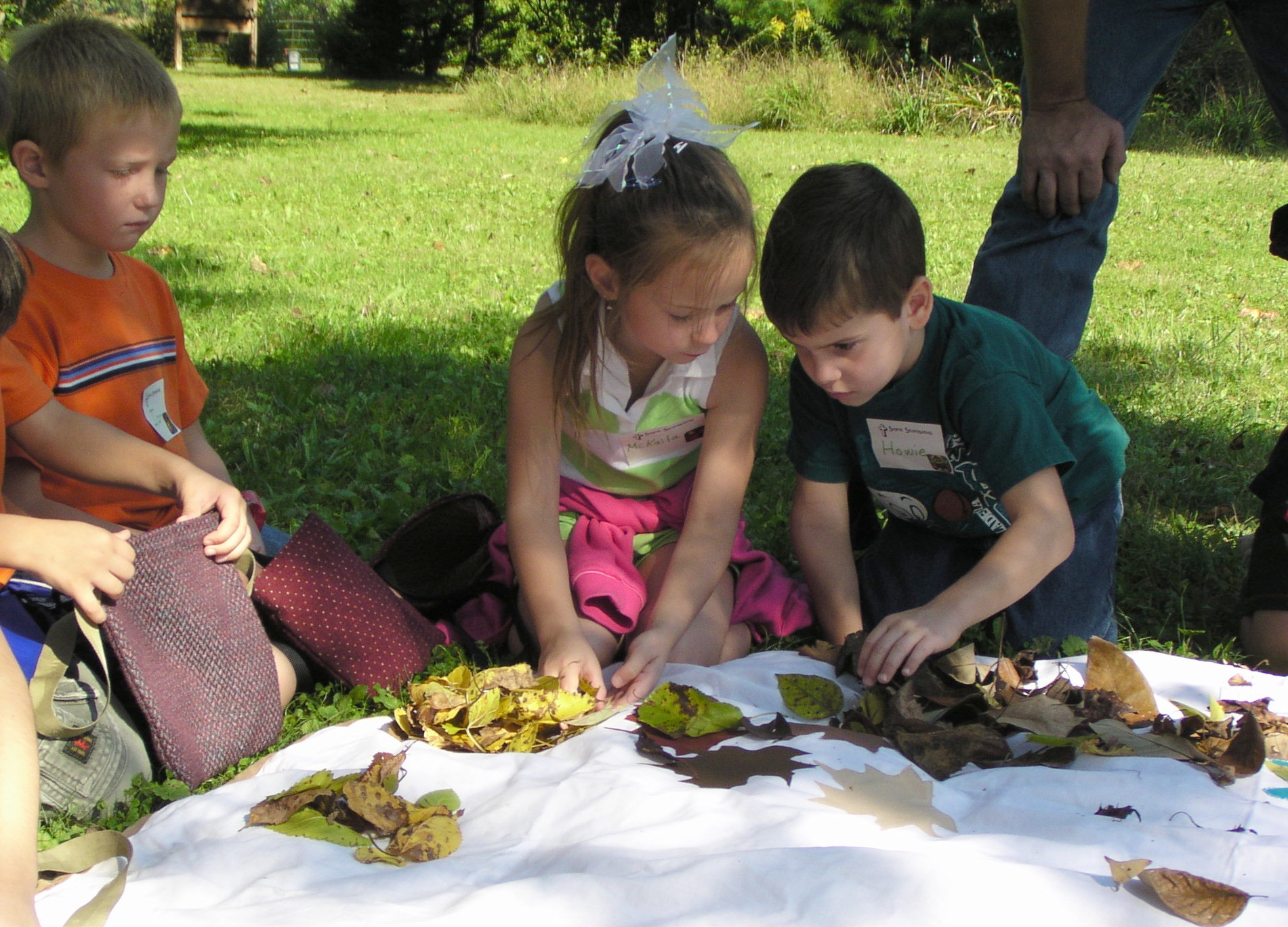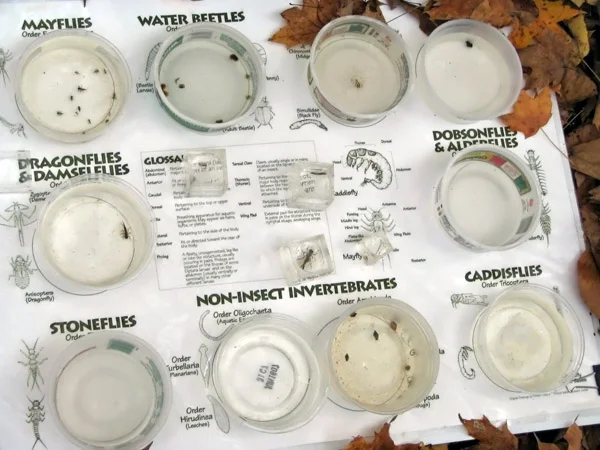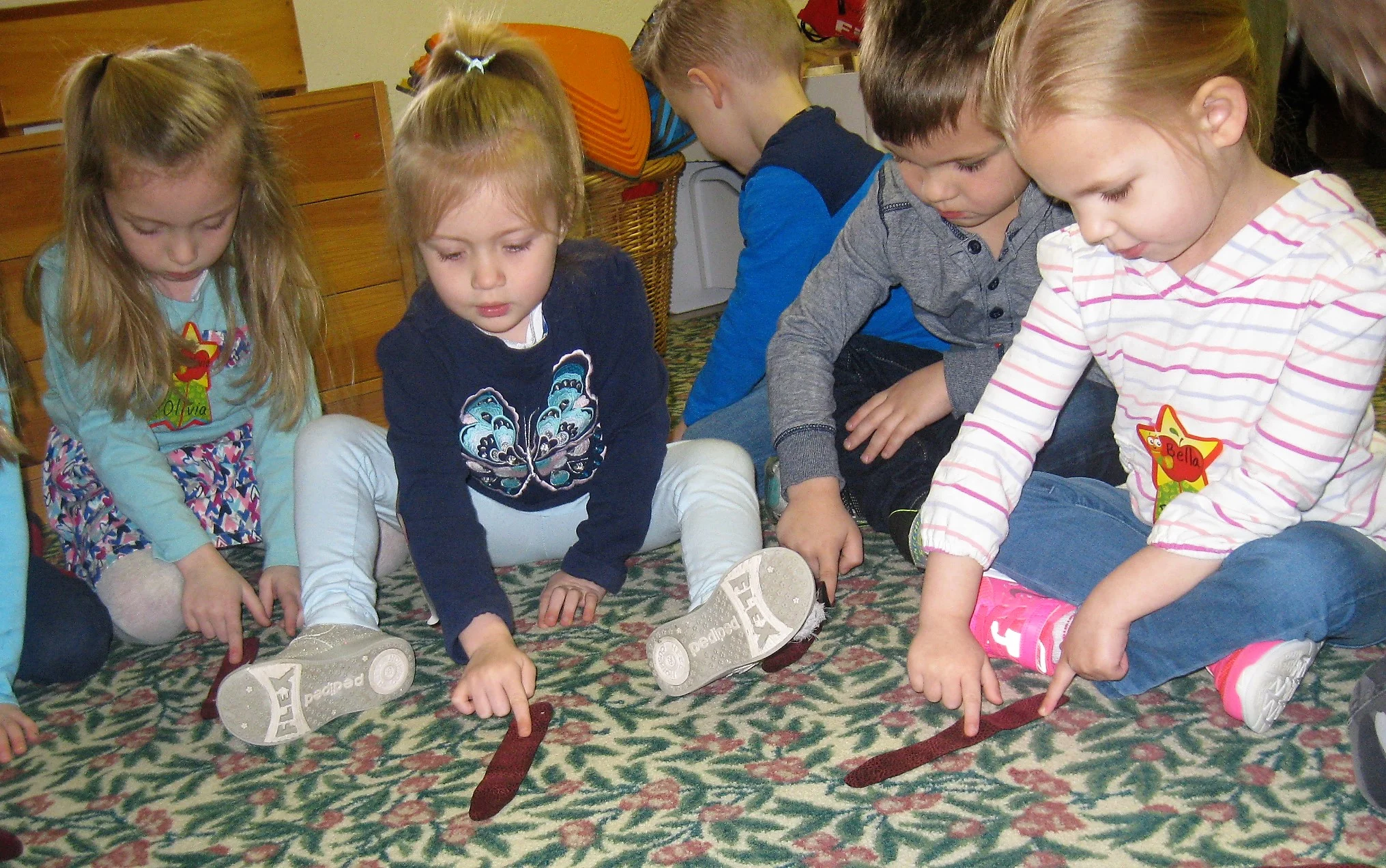Fall Fun (Pre-School)
Sight vibrant fall colors, listen to seasonal sounds, experience fall's crisp touch, and discover fall's spicy smells. In small groups of 10 - 12 students per leader, each student will delight in the natural treasures of this truly remarkable season!
Fall Mysteries (Kindergarten)
Students become investigators as they search for clues along the trail that will uncover the secrets of “Danny Deer’s Fall Mysteries.” What are those squirrels doing? Why do some birds fly south? What treasures do wildflowers leave behind? Excitement abounds as your students marvel at all that is fall!
Fee:
* $7.50 per student ($75 minimum per class at The Conservancy)
* Each program is 60 minutes in length and includes use of the restroom and picnic facilities.
Contact: Reservations can be made by contacting our education department at education@perkiomenwatershed.org
What the teachers are saying:
The activities were great - short enough to hold the children's interest, long enough to be educational and fun!
-Teacher, His Kids Christian Pre-School
PDE Academic Standards covered by this lesson include:
4.1.PK.A - Identify living and nonliving things in the immediate and surrounding environment.
4.1.PK.D - Identify basic needs of living things.
4.1.PK.E - Identify the change of seasons in the environment.
4.1.PK.F - • Distinguish between scientific fact and opinion. • Ask questions about objects, organisms and events. • Understand that all scientific investigations involve asking and answering questions and comparing the answer with what is already known. • Plan and conduct a simple investigation and understand that different questions require different kinds of investigations. • Use simple equipment (tools and other technologies) to gather data and understand that this allows scientists to collect more information than relying only on their senses to gather information. • Use data/evidence to construct explanations and understand that scientists develop explanations based on their evidence and compare them with their current scientific knowledge. • Communicate procedures and explanations giving priority to evidence and understanding that scientists make their results public, describe their investigations so they can be reproduced and review and ask questions about the work of other scientists.
4.4.PK.C - Recognize that plants and animals grow and change.
3.1.PK.A1 - Recognize the difference between living and non-living things.
3.1.PK.A9 - • Ask questions about objects, organisms, and events. • Participate in simple investigations to answer a question or to test a prediction. • Use the five senses and simple equipment to gather data.
4.1.K.A - Identify the similarities and differences of living and non-living things within the immediate and surrounding environment.
4.1.K.D - Observe and describe what happens to living things when needs are met.
4.1.K.E - Identify how the changes of seasons affect their local environment.
4.1.K.F - • Distinguish between scientific fact and opinion. • Ask questions about objects, organisms and events. • Understand that all scientific investigations involve asking and answering questions and comparing the answer with what is already known. • Plan and conduct a simple investigation and understand that different questions require different kinds of investigations. • Use simple equipment (tools and other technologies) to gather data and understand that this allows scientists to collect more information than relying only on their senses to gather information. • Use data/evidence to construct explanations and understand that scientists develop explanations based on their evidence and compare them with their current scientific knowledge. • Communicate procedures and explanations giving priority to evidence and understanding that scientists make their results public, describe their investigations so they can be reproduced and review and ask questions about the work of other scientists.
4.4.K.C - Observe and describe stages of life cycles for plants and animals.
3.1.K.A1 - Identify the similarities and differences of living and non-living things.
3.1.K.C2 - Describe changes animals and plants undergo throughout the seasons.







